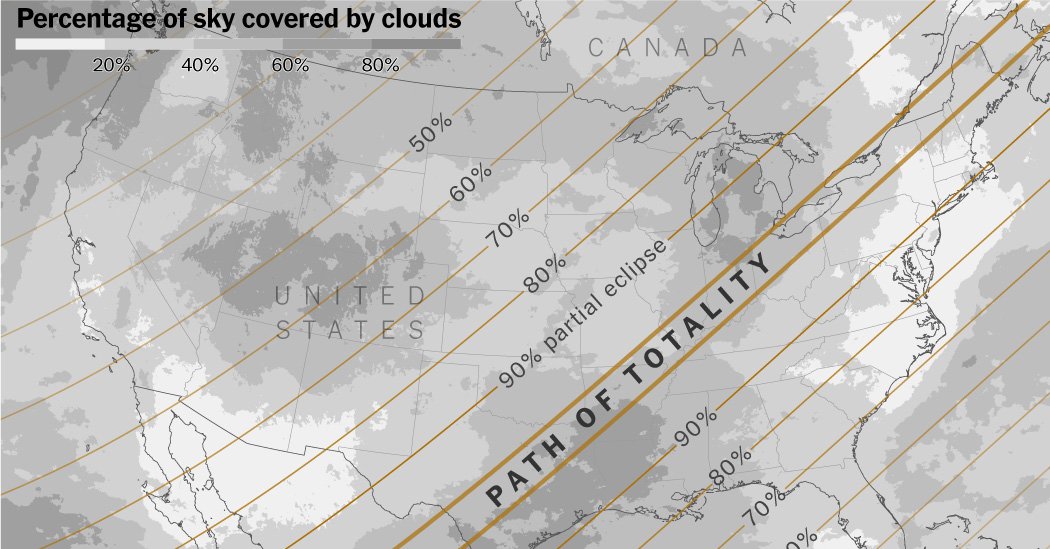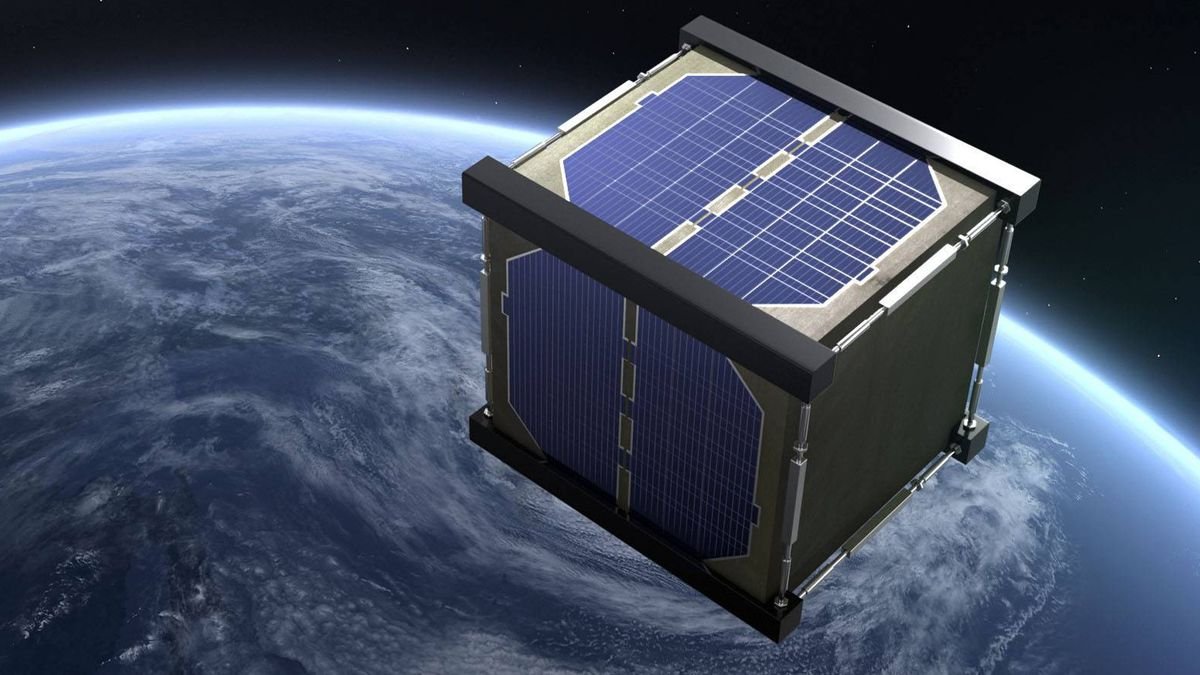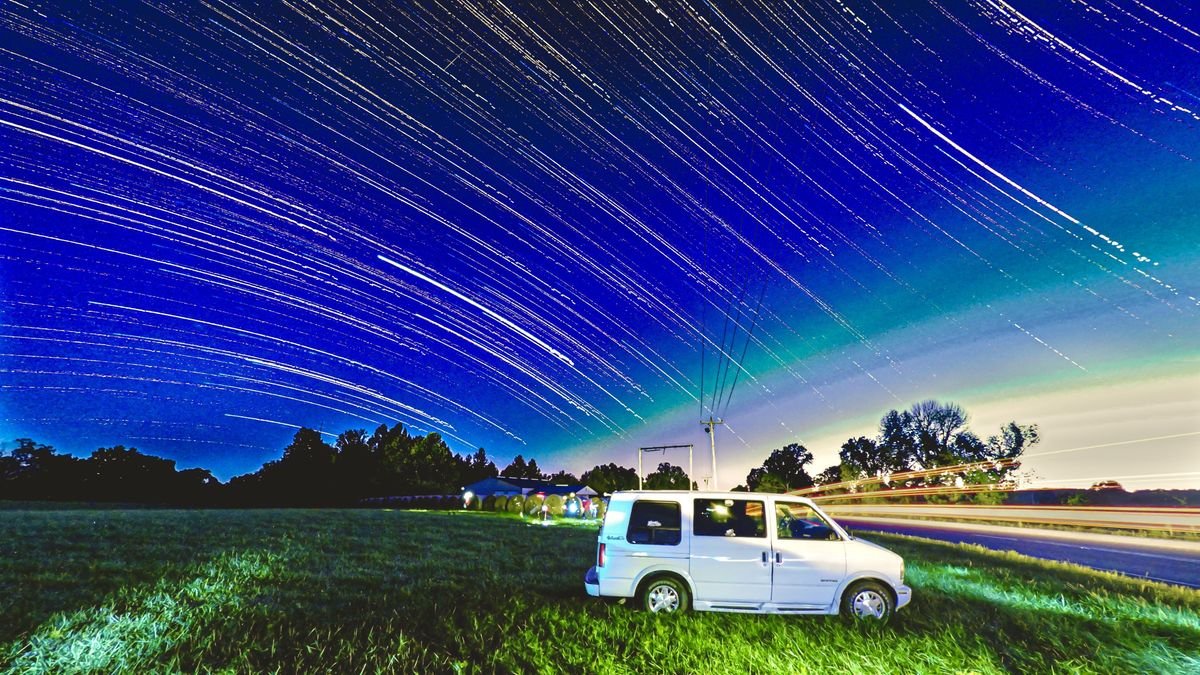April 8 will be your last opportunity to see a total solar eclipse in the contiguous United States or Canada until 2044. Mexico will have to wait longer. But if clouds fill the sky, your shot at seeing the spectacle could be lost.
If you have an eclipse viewing destination in mind, enter it in the box below to see the latest cloud cover forecast. We expect the forecast to become more accurate closer to the day of the eclipse, and The Times will update this map as fresh forecasts become available.
See how much of the sky could be cloudy during the eclipse
The above map shows predictions of cloud cover — which refers to the amount of the sky covered by clouds.
So far, forecast models show a high probability of clouds’ obscuring the view of the eclipse, especially in parts of Texas. Surprisingly, some parts of western New York have a better outlook than some points to the south and west.
But you may not want to bank on these models this far out.
“There are still a lot of uncertainties when you are 10 days away from the eclipse,” said Jay Anderson, a Canadian meteorologist. He advises eclipse viewers not to form an opinion until one or two days before the event.
As April 8 gets closer, forecasters will look to see if the same area shows clouds each time new data becomes available. Consistency in the results gives them more confidence in a forecast.
Mr. Anderson runs a website, Eclipsophile, that provides detailed analysis of weather conditions to aid eclipse chasers.
He has been able to see eclipses with forecasts of 50 to 60 percent cloud cover. But around 90 percent, which means it’s almost completely overcast, you would have to be really lucky to see the moon obscure the sun.
On a typical eclipse day, Mr. Anderson says, he would check satellite pictures or simply look up at the sky for sunny patches.
For some eclipses, you need a bit of luck no matter the forecast. In 2009, Mr. Anderson directed a tour group in China to travel about 125 miles outside Shanghai to avoid bad weather. It was pouring when they reached their destination. But as the period of totality approached, the rain suddenly stopped and the clouds parted. They were able to see the total eclipse for almost five minutes.
“Sometimes the weather gods are smiling at you,” Mr. Anderson said.
Jay Anderson at his first total solar eclipse, in 1979, outside Winnipeg, Canada. He has traveled to see every total solar eclipse since then.
Photo from Jay Anderson
Over the years, he has worked with tour companies to guide eclipse viewers to the best locations. He likens eclipse viewing to storm chasing. On his trips, he has told cruise captains to turn their boats around and bus drivers to search for hours to find a break in the clouds.
The unlucky ones who find themselves under an overcast sky during the eclipse will still notice a sudden plunge into darkness as the moon passes in front of the sun, Mr. Anderson says. But they won’t be able to see all the details of the eclipse — the shadow bands, the diamond ring, the sun’s corona.
“It’s muted compared to being in the sunlight itself,” he said.
Even if you travel in pursuit of good weather, try to stay within the path of totality to experience the full effect of the sun’s being completely obscured by the moon — clouds or no clouds.
Historical Data
Before reliable cloud forecasts were available, The Times analyzed historical cloud cover derived from satellite measurements.
Historical cloudiness along the center of the eclipse’s path
Source: NASA Aqua/MODIS
Note: Places are plotted according to their longitude, even if they do not lie on the centerline of the path of totality.











